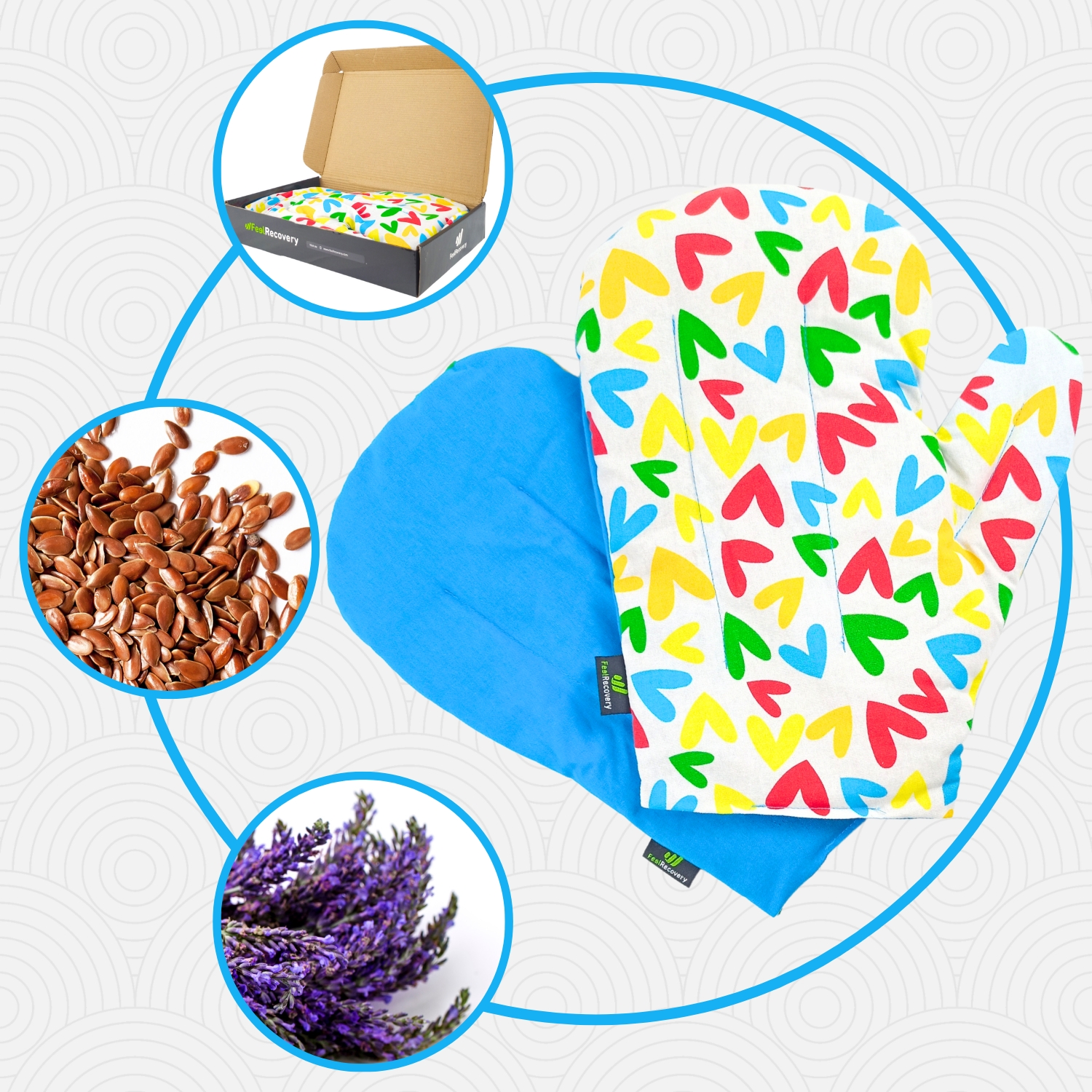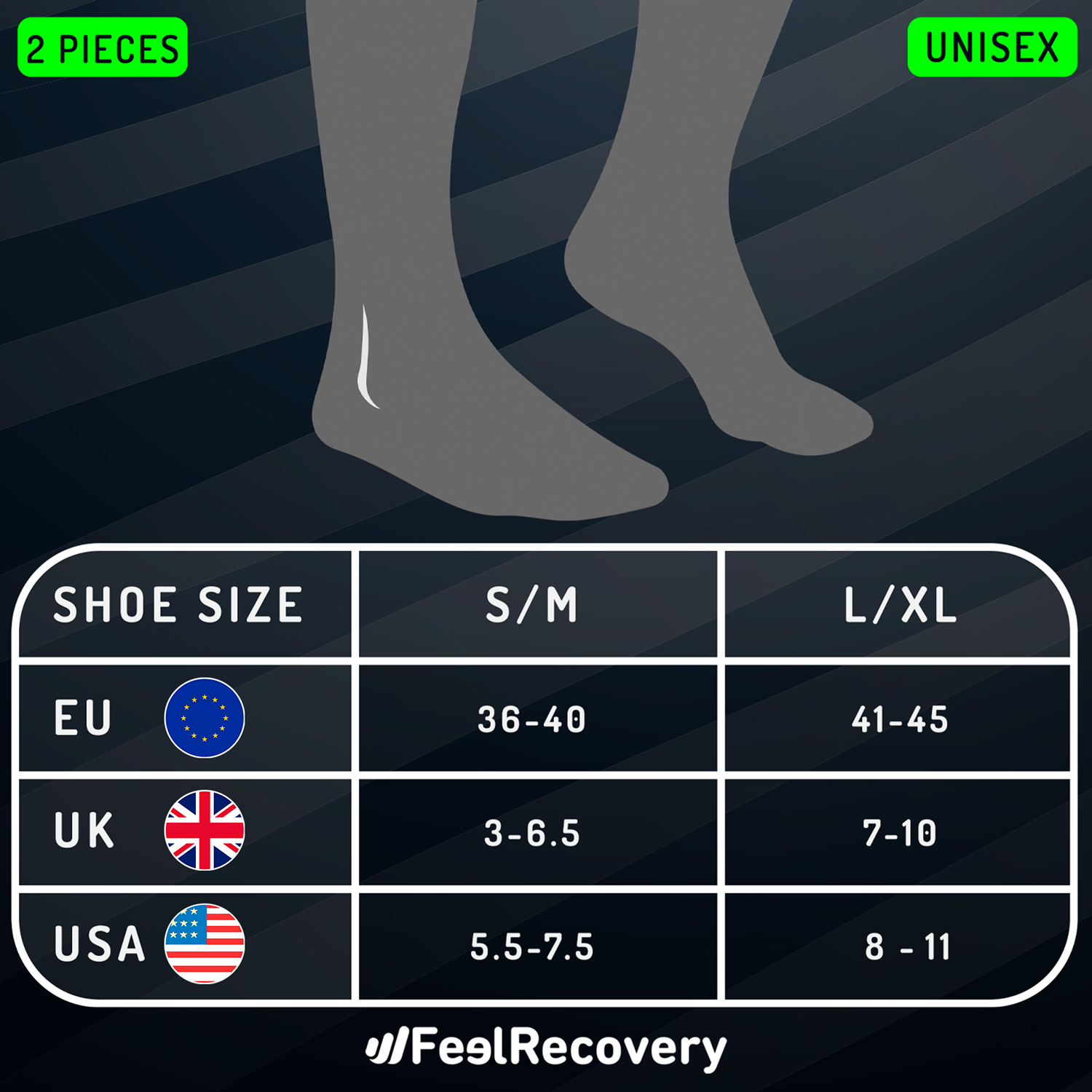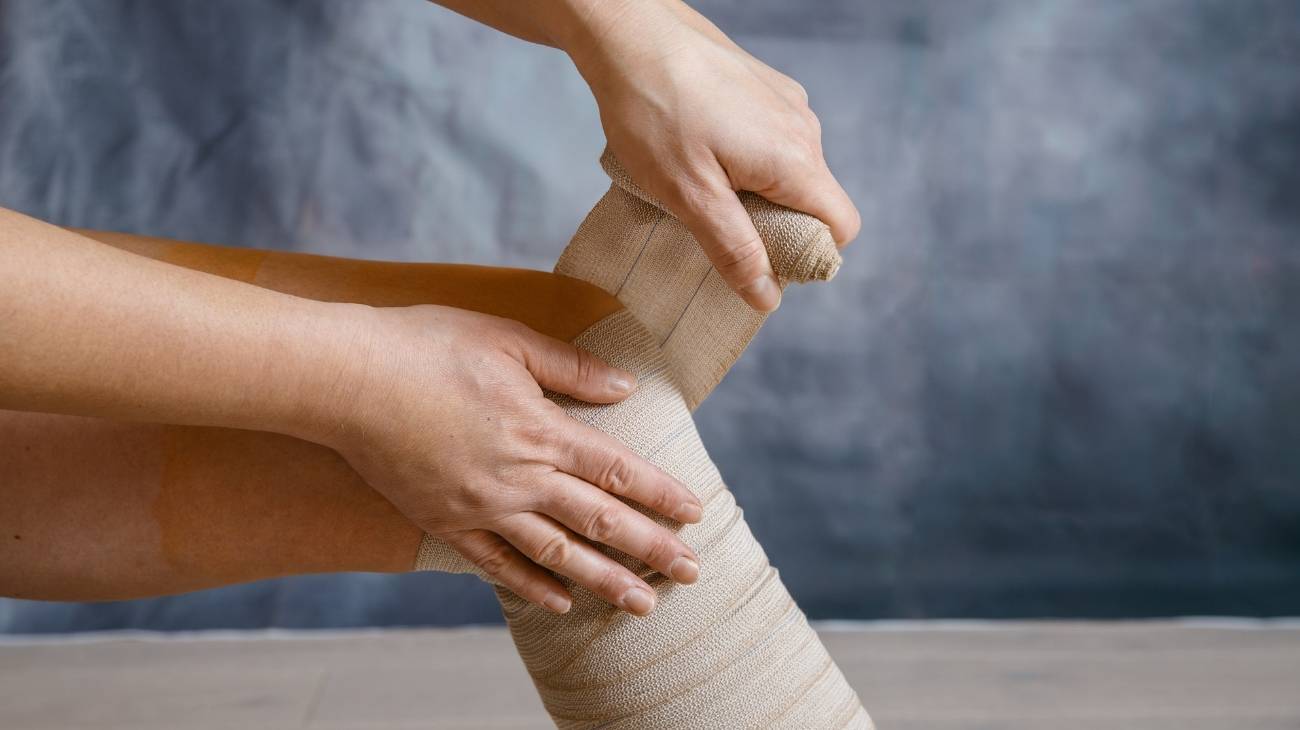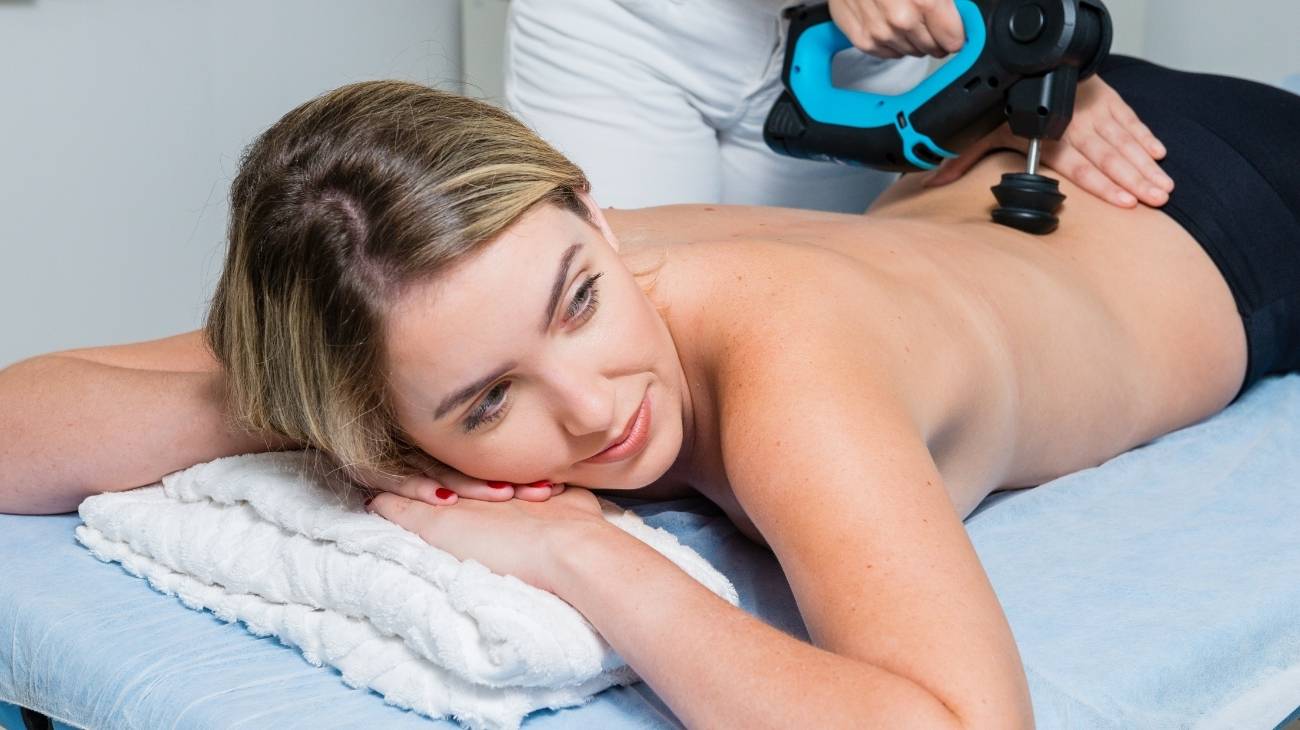- What is thermotherapy and what is it used for in physiotherapy?
- What are the beneficial and positive physiological effects of applying heat on health?
- What are the best methods of using thermotherapy for injury recovery?
- What are the types of thermotherapy that exist?
- What are the indications and contraindications of applying heat?
- Thermotherapy and cryotherapy; What are the advantages of using these therapies together?
- F.A.Q: Frequently Asked Questions
There are times when we have been hurt or even simply found ourselves in a bad way and have been advised to take something hot or to get warm. Has this never happened to you? Thermotherapy is precisely this, the use of heat to achieve some benefit.
It is currently used in medicine and, curiously, also in aesthetics and there are various types depending on their application. We will show you how it works, along with other basic questions such as how it is performed and, of course, the benefits it brings.
What is thermotherapy and what is it used for in physiotherapy?
The simplest definition of thermotherapy is the "treatment of ailments through the application of heat". But, in fact, at present, and as we have already said, it is also used for aesthetic purposes.
In any case, the procedure is similar: receiving heat in a specific area or in a general way to achieve a benefit.
These are many and will depend on the type of heat therapy we use, its duration, etc. What we can advance is that there are from a simple help to make it easier for us to sleep to, for example, the ease of walking again after an accident.
The heat acts on our body in different ways. There are things that always apply and others that depend, as we have said, on circumstances that we can modify such as materials, type of exposure, personal characteristics...
Thermotherapy is a type of treatment that uses heat to improve the condition of our organism, generally after suffering a mishap such as having made a bad movement, having had an accident, injuring ourselves, etc.
In any case, in the following points we will see in detail how heat acts on our body and all the cases in which it is beneficial for us (as well as when it is not, which is also important to know).
bestseller
-
2 Mittens: Microwave Arthritis Gloves (Hearts)
£24,95 -
Microwavable Heated Slippers (Hearts)
£24,95 -
Microwavable Heated Slippers (Oxford)
£24,95 -
Microwavable Heated Slippers (Sport)
£24,95 -
Microwave Wheat Bag for Back Pain Relief (Extra Large) (Sport)
£24,95 -
Microwave Wheat Bag for Neck & Shoulder Pain Relief (Oxford)
£24,95 -
Microwave Wheat Bag for Neck Pain Relief (Oxford)
£20,95 -
Microwaveable Wheat Bag for Pain Relief (Sport)
£20,95 -
Wheat Bag for Microwave Classic Bottle Shaped (Hearts)
£20,95
What are the beneficial and positive physiological effects of applying heat on health?
It is logical to think that if it is used by physiotherapists and recommended by doctors it is because it must offer more than interesting effects. If we generalise, these are classified into three:
- Lower blood pressure: High temperatures quickly affect the heart, which acts, in a reflex manner, to reduce the pressure.
- Vasodilation: The capillary vessels in the area where we put heat will extend, widen, increasing the blood flow. This has an energetic effect, cleansing the blood and providing it with new nutrients.
- Sedation: Applied for a long time, it is capable of achieving a sedative effect on us, which can come in handy in a number of situations such as fatigue, muscular pain or rigidity, stress, difficulty in sleeping...
With these three "simple" actions, much more is achieved than you can imagine. Later on we will see, of course, all the cases, in a specific way, in which applying heat has positive effects, which are many.
What are the best methods of using thermotherapy for injury recovery?
The methods of heat application you can find today are quite varied. They all have their pros and cons and, of course, are indicated, or not, in one or another situation. Let's look at the most used and beneficial ones.
Conductive thermotherapy methods
Conduction allows heat to pass from surface to surface by contact. For this purpose, solids are ideal. Among them, the ones that are most used both for their economic price and for their results and ease of use are
- Wheat bags for microwable: Natural, totally safe and heated in microwaves. The wheat bag acts as its own protective element because it is the seeds that are heated.
- Heating pads: These are plugged into the light and heated until they reach the temperature regulated in their manufacture. Remember to choose a model that completely covers the heating elements and parts that are heated. In therapies, they are directly covered with damp cloth.
- Electric blankets: They are kept connected to the electric current so that they work. Generally we can choose temperature as well as other options such as irradiation time or areas to be heated.
- Hot water bottles: Basically for domestic use. A rubber bag that we fill with water at about 48º and that we place directly or indirectly.
- Chemical bags (crackpacks or hotpacks): They have silicate gel, bentonite or similar.
- Chemical compresses: Same as above but in a compress format. Two chemicals are mixed and the temperature increases.
- Baths: They can be of hot water but if you go to an expert you can enjoy modalities like those of paraffin, liquid, or with mud, like plasters.
- Compresses: Steam heated and centrifuged. Especially suitable for spasms.
Convective thermotherapy methods
Convection causes the heat to be received in the form of gas. There are far fewer options but they are more appropriate for therapeutic spaces and, of course, more useful if we have to work on the whole body. They would be:
- Humid air cabins and Roman baths: These keep you in an environment or setting with high relative humidity but which is neither uncomfortable nor hardly noticeable, and you can have fairly long sessions in them.
- Finnish dry-air saunas: The high temperatures that are achieved from electric cookers and basalt stones. It is very important to regulate the time we spend inside, as it is a very hot space, not suitable in many of the cases that we will see later as contraindicated.
Radiation thermotherapy methods
Finally, we have what would be the application of radiation heat. It may be less heard but it also occurs in professional environments. In fact, it must be done by an expert in the field. The heat is transported in a vacuum and is reflected and absorbed in spaces according to its colour.
Radioactive thermotherapy is carried out using infrared or microwaves, both with professional equipment. The sessions can offer very different results to those expected. For this reason, constant monitoring must be carried out by a professional, who will revise sessions and any modifiable parameters according to progress.
What are the types of thermotherapy that exist?
Like almost any action that affects our body, we can find different types of thermotherapy. Pay attention to these because it is essential to know this classification when choosing our heat treatment.
In this case we will make a double classification. On the one hand, we will consider the level of effectiveness (superficial and deep) and, on the other, its objective (medical or aesthetic).
Superficial
Superficial thermotherapy is the one we practically all receive when we have colic, mild or medium pain, have been injured, etc. As its name suggests, it is applied and has an effect on the surface, up to a centimetre from the outside of our skin.
Some examples are:
- Microwavable wheat bags.
- Hot-packs.
- Mud baths.
- Sessions with infrared lamps.
That is, it can be given by convection, conduction or conversion.
Deep
Deep thermotherapy is only given by conversion, acting between three and five centimetres deep in our body and being, of course, much more invasive.
Examples of this are:
- Ultrasound.
- Short wave.
- Microwave.
- Diathermy.
Medical
It is that practice that seeks to achieve results at a medical level. By this we mean putting heat into the body to cure or improve a problem or pathology, whether it is temporary or chronic.
Of course, this is what we receive from physiotherapists or directly from medical centres. We would talk about putting a waterbag on our neck if we are office workers and continuously sit in front of a computer, the relief of a menstrual pain or the renewal of nutrients in our tissues by more blood flow.
Aesthetics
Currently, we find that this resource is also used in aesthetics to achieve some visual results in a non-invasive way. For example, one case would be the stimulation of the lipid metabolism, i.e. the fat metabolism. Another case would be that of peelings with wraps, which perform a deep and total cleaning of the dermis.
What are the indications and contraindications of applying heat?
We have already said that there are a huge number of occasions in which applying heat or even dipping into it is indicated to improve our condition at different levels.
Indications
These are the cases in which thermotherapy will help you:
- Pain (it is analgesic) both physical and head, of the organs, menstrual etc.
- Constriction, hypertonia, stiffness and tendinitis (it nourishes and oxygenates with a greater blood flow).
- Contusions and other injuries that remain after three days.
- Spasms (analgesia and sedation) and involuntary reflexes.
- Low defences (the tissues receive more defensive elements).
- Fluid retention, oedemas and similar (favours drainage).
- Chronic inflammation.
- Bursitis.
- Rheumatic diseases such as fibromyalgia.
- Musculo-skeletal diseases.
- Cellular and tissue atrophy and dystrophies (regenerates cells and tissues)
- Motor dysfunctions.
Contraindications
Never do thermotherapy on your own if you have the following conditions:
- Cardiopathy.
- History of anticoagulation episodes or propensity to do so.
- Glaucoma.
- Neoplasia.
- Any infectious process.
- Open wounds.
- Severe hypotension.
- Liver failure.
- Acute inflammations (recently occurring or not remitting with days). In this case the opposite method is used, cryotherapy.
- Current suffering from a temporary skin pathology.
- Collagen-related problems.
- Altered tactile sensitivity.
- Kidney problems.
- Mild insomnia.
- Pregnancy (on the belly).
- If you have a metal instrument embedded in your body.
Always consult a specialist to decide whether this therapy could be beneficial and compatible with your problem and, depending on the circumstances, to determine how to do so (temperature, exposure time, exercises, cessation of medication, other particularities...)
Side effects
In addition, you should always bear in mind that some side effects may occur:
- Burns and/or wounds.
- Drowsiness.
- Dizziness.
- Pain.
- Altered sensitivity or irritability.
- Ischemia.
- Increased inflammation.
- Fever if we suffer from diseases in which this is a symptom.
Thermotherapy and cryotherapy; What are the advantages of using these therapies together?
In a similar way, but on the contrary, we have cryotherapy, which is the application, in this case, of cold, to alleviate some illnesses. These can be applied together in the same session on some occasions, of course, when there are no contraindications, obtaining excellent results.
- Renewed tissues: The heat favours irrigation and, with it, the arrival of oxygen and nutrients. The cold, on the other hand, is capable of removing all kinds of toxins and other waste. Thus, cleaning and renovation of the tissues is achieved, which gains in quality. For this to happen, the applications of cold/heat must be alternated several times, obtaining nutrients and discarding excess material.
- Capillary flexibility: The two therapies have opposite effects on the capillary vessels. By alternating them, what we do is work on them, expanding and constricting them. They exercise these fine tissues, which means that they are better prepared both to carry a greater flow of blood and to face any problem such as an accumulation or thickening of blood.
- Starting up the muscular, articular and nervous systems: The above, both points, means that it is easier and less painful to start up our systems, especially if they have been too long atrophied or at rest.
- Pain with focus: The cold reduces pain by numbing the nerves that are sending painful signals to the brain (especially in the case of headache). These do not reach or reach very little or only slightly. The heat, afterwards, will allow us to normalize watering, oxygenation and temperature.
- Rheumatism: As its main symptom is pain, both cold and heat benefit us if we suffer from it. The joint application, besides working on this, allows us to take advantage of many of the things we have already seen.
You can also make use of cryotherapy first after an injury, as it will calm the first symptoms. After that, apply heat to alleviate the remaining symptoms of the following days. It is generally advisable to use cold for the first 2 or 3 days and then start with heat (provided the swelling is not too obvious and the area is not red or hot).
F.A.Q: Frequently Asked Questions
References
- Brosseau, L., Yonge, K. A., Welch, V., Marchand, S., Judd, M., Wells, G. A., & Tugwell, P. (2003). Thermotherapy for treatment of osteoarthritis. Cochrane database of systematic reviews, (4). https://www.cochranelibrary.com/cdsr/doi/10.1002/14651858.CD004522/full
- Welch, V., Brosseau, L., Casimiro, L., Judd, M., Shea, B., Tugwell, P., & Wells, G. A. (2002). Thermotherapy for treating rheumatoid arthritis. Cochrane Database of Systematic Reviews, (2). https://www.cochranelibrary.com/cdsr/doi/10.1002/14651858.CD002826/full
- Nadler, S. F., Weingand, K., & Kruse, R. J. (2004). The physiologic basis and clinical applications of cryotherapy and thermotherapy for the pain practitioner. Pain physician, 7(3), 395-400. https://www.researchgate.net/profile/Kurt-Weingand/publication/6928434_The_Physiologic_Basis_and_Clinical_Applications_of_Cryotherapy_and_Thermotherapy_for_the_Pain_Practitioner/links/5de9271e92851c8364654b91/The-Physiologic-Basis-and-Clinical-Applications-of-Cryotherapy-and-Thermotherapy-for-the-Pain-Practitioner.pdf
- Ochiai, S., Watanabe, A., Oda, H., & Ikeda, H. (2014). Effectiveness of thermotherapy using a heat and steam generating sheet for cartilage in knee osteoarthritis. Journal of physical therapy science, 26(2), 281-284. https://www.jstage.jst.go.jp/article/jpts/26/2/26_jpts-2013-295/_article/-char/ja/
- Brosseau, L., Robinson, V., Pelland, L., Casimiro, L., Milne, S., Judd, M., ... & Shea, B. (2002). Efficacy of thermotherapy for rheumatoid arthritis: A meta-analysis. Physical therapy reviews, 7(1), 5-15. https://www.tandfonline.com/doi/abs/10.1179/108331902125001752
- Schmidt, K. L., & Simon, E. (2001). Thermotherapy of pain, trauma, and inflammatory and degenerative rheumatic diseases. In Thermotherapy for neoplasia, inflammation, and pain (pp. 527-539). Springer, Tokyo. https://link.springer.com/chapter/10.1007/978-4-431-67035-3_61
- Henrotin, Y. (2011). Prise en charge non pharmacologique de l’arthrose de la hanche et du genou. Que faut-il recommander?. La Lettre de médecine physique et de réadaptation, 27(1), 15-22. https://link.springer.com/article/10.1007/s11659-011-0260-5
- Poitras, S., & Brosseau, L. (2008). Evidence-informed management of chronic low back pain with transcutaneous electrical nerve stimulation, interferential current, electrical muscle stimulation, ultrasound, and thermotherapy. The Spine Journal, 8(1), 226-233. https://www.sciencedirect.com/science/article/abs/pii/S1529943007009151
- Cramer, H., Baumgarten, C., Choi, K. E., Lauche, R., Saha, F. J., Musial, F., & Dobos, G. (2012). Thermotherapy self-treatment for neck pain relief—A randomized controlled trial. European Journal of Integrative Medicine, 4(4), e371-e378. https://www.sciencedirect.com/science/article/abs/pii/S1876382012000509
- Airaksinen, O., Brox, J. I., Cedraschi, C., Hildebrandt, J., Klaber-Moffett, J., Kovacs, F., ... & COST B13 Working Group on Guidelines for Chronic Low Back Pain. (2006). European guidelines for the management of chronic nonspecific low back pain. European spine journal, 15(Suppl 2), s192. https://www.ncbi.nlm.nih.gov/pmc/articles/PMC3454542/
































